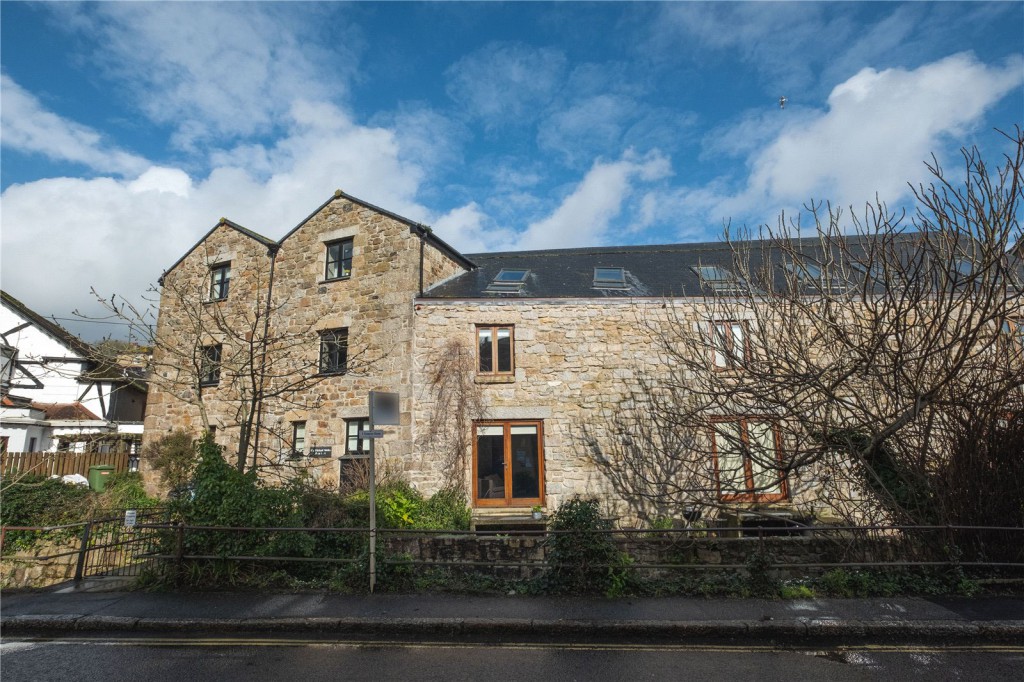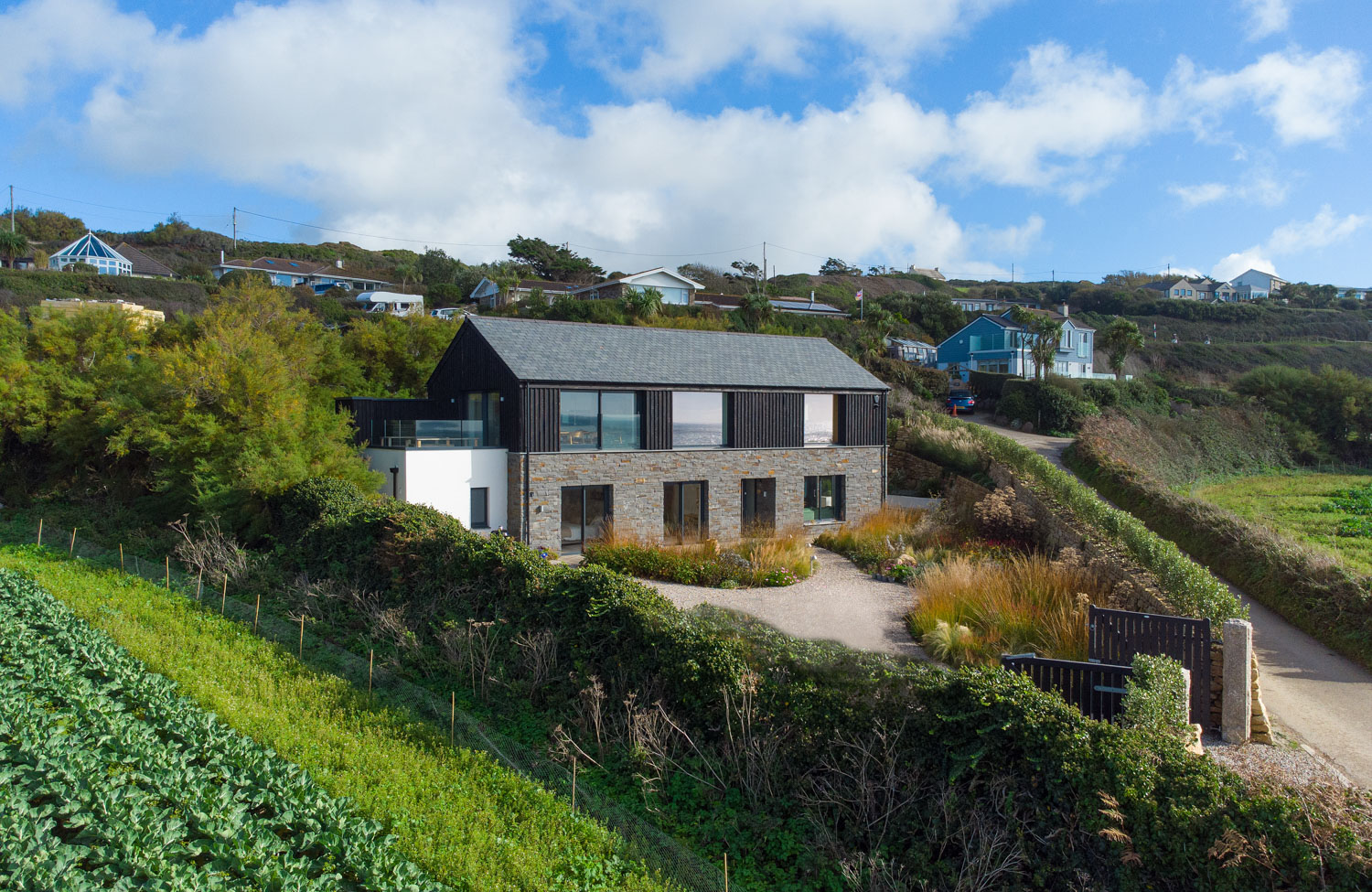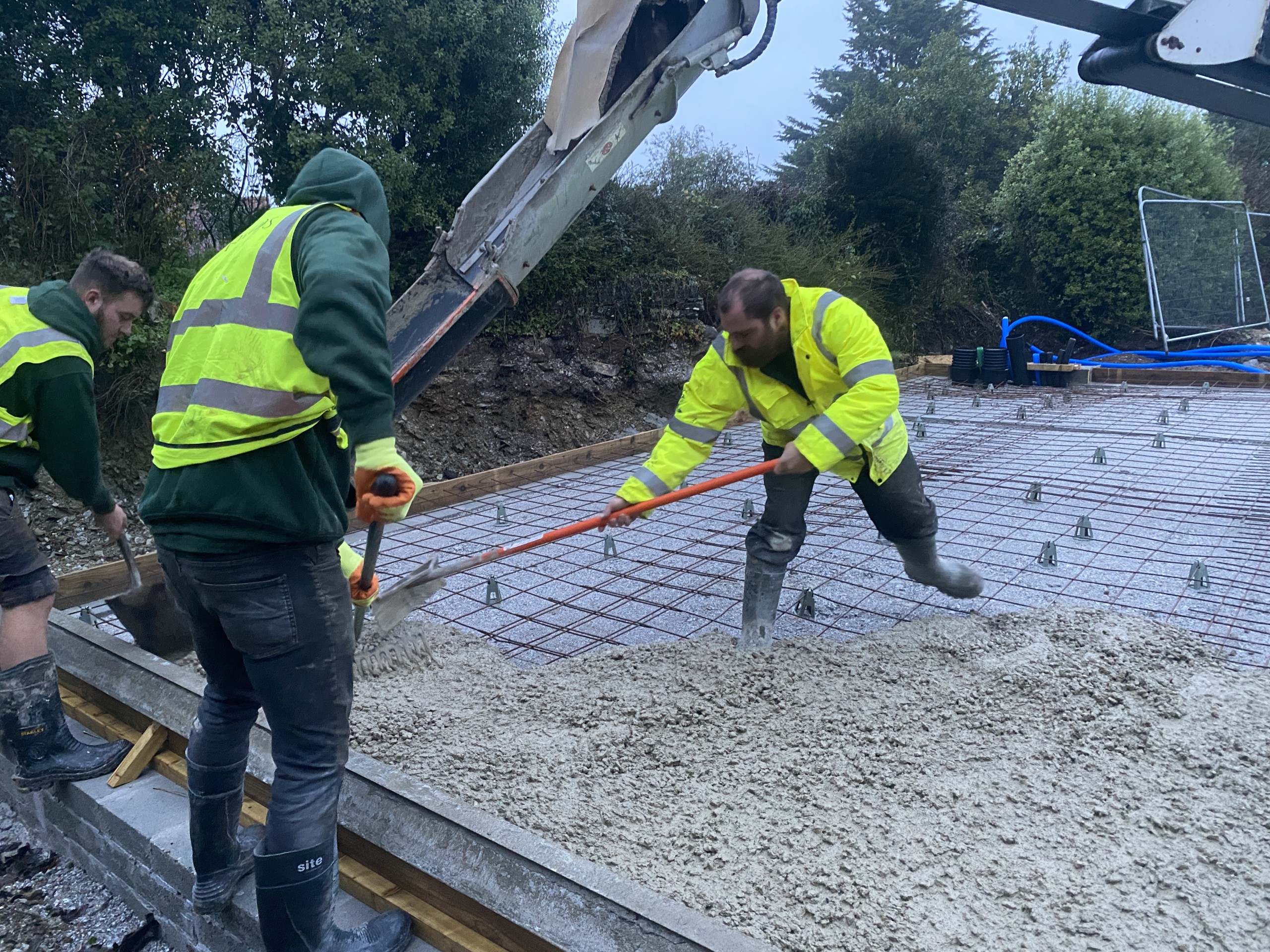Designing a home on Cornwall is very much a question of working with the landscape, not trying to impose upon it.
Share:
Knowing Cornwall
Cornwall is Coastal
Much of Cornwall is coastal – you can see the sea from the house, or at least the gardens in many areas. And even if you can’t see it, nowhere is Cornwall is more than 20 miles from the sea. There are 422 miles of coastline, featuring high cliffs, especially on the north coast, and more sheltered lowland areas on the southern coast.
The proximity to the sea, and the fact that we’re on a peninsula, has a definite effect on the weather. In the UK, we have what is known as a Temperate Oceanic Climate, which is characterised by mild winters and cool summers. And, while Cornwall has the mildest and sunniest climate in the UK, we don’t get the heat that other places can experience, and our winters are often warmer as well. Our weather is changeable, and we can experience a lot of rainfall, and stronger winds than some other parts of the UK. The wind is often full of salt, whipped up from the sea, and there is a distinct prevailing wind in many areas, as evidenced by trees with lopsided growth.
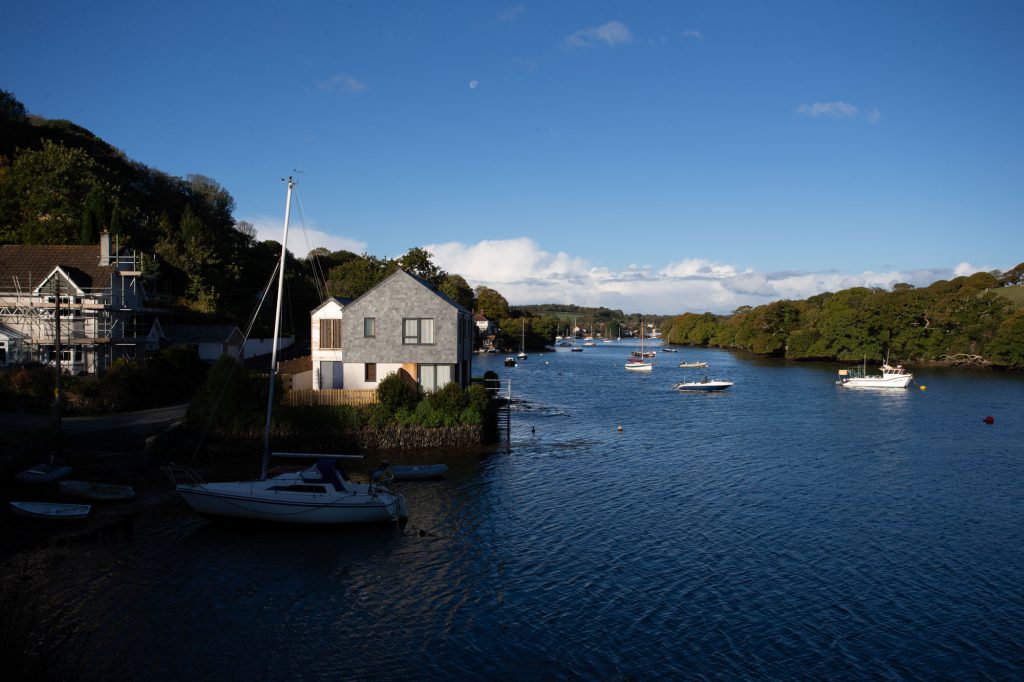
Cornwall is also Rural
There is a single city in Cornwall – Truro – with around 23,000 inhabitants, according to the 2021 census. There are only five towns in Cornwall with more than 20,000 residents, (in order, Newquay, St Austell, Falmouth, Truro and Camborne), with a total of 570,000 residents in the whole county and a population density slightly over half of the average for the UK, and around 3% of that of London.
The gaps in between are farmland, moorland, coastline and dunes, and some woodland, with smaller towns, villages and clusters of houses making up the residential areas. There are small, narrow roads, and access can be an issue, in some places.
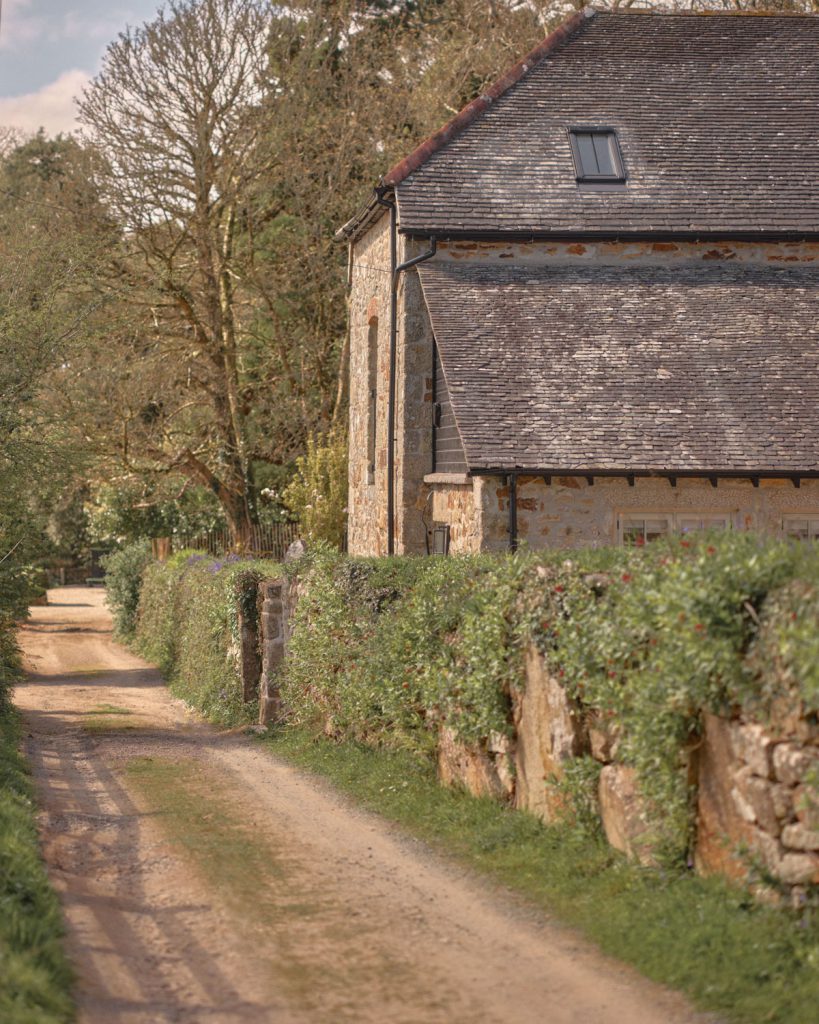
So, how does that affect designing and building properties in Cornwall?
Building in a coastal area
Many seafront plots are sloping, so designing to maximise this feature is recommended, rather than trying to carve out the space to place a standard-shaped home. Using the slope to allow panoramic views from the living areas, and placing bedrooms below, or multi-layered terraces, balconies, flat roofs and indoor-outdoor living spaces can help you enjoy the scenery.
If your property is literally on the seafront, and high tides, and storm waves crashing onto it, could be issues, or if you’re river-front, and flooding could occur, then these are very specific design challenges. We have built properties against 100-year flooding incidents, [see more here], and are comfortable working with that. Homes that front onto the sea need supreme care to be taken to withstand the force of the waves, and tidal surges, and we would take advice from experts on how to judge that, to ensure you have something substantial that is also aesthetically pleasing, and usable.
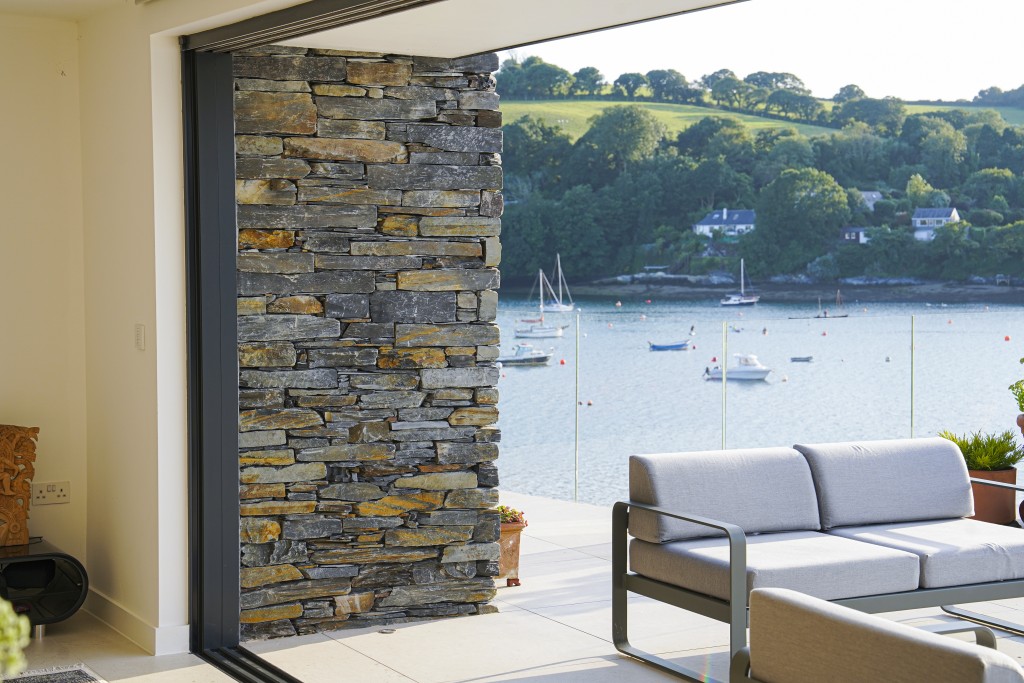
The wind, and the salt are the two major factors that we have to consider when designing and building in coastal areas. Design features that catch the wind are at risk of being damaged, so sails, or decorative facings need to be carefully considered. The path that the wind will take around your property needs to be determined, to ensure that we’re not creating a wind tunnel, and that there are baffles to allow you to, for example, stand in a sheltered place while unlocking your front door!
With the amount of salt in the wind, the materials that are used for exterior metalwork need to be chosen carefully to minimise the risk of corrosion and rust. We know what works, and what doesn’t, and will be able to advise you. Also, for cladding, the wind and rain need to be accounted for. Cedar, for example, can be deliberately chosen for the weathered effect that will only become apparent in a few years. It will be a bright red-brown when installed, and weather to a more subtle silver grey over time. Your other external features can be chosen to tone with this final colour, rather than the initial shade.
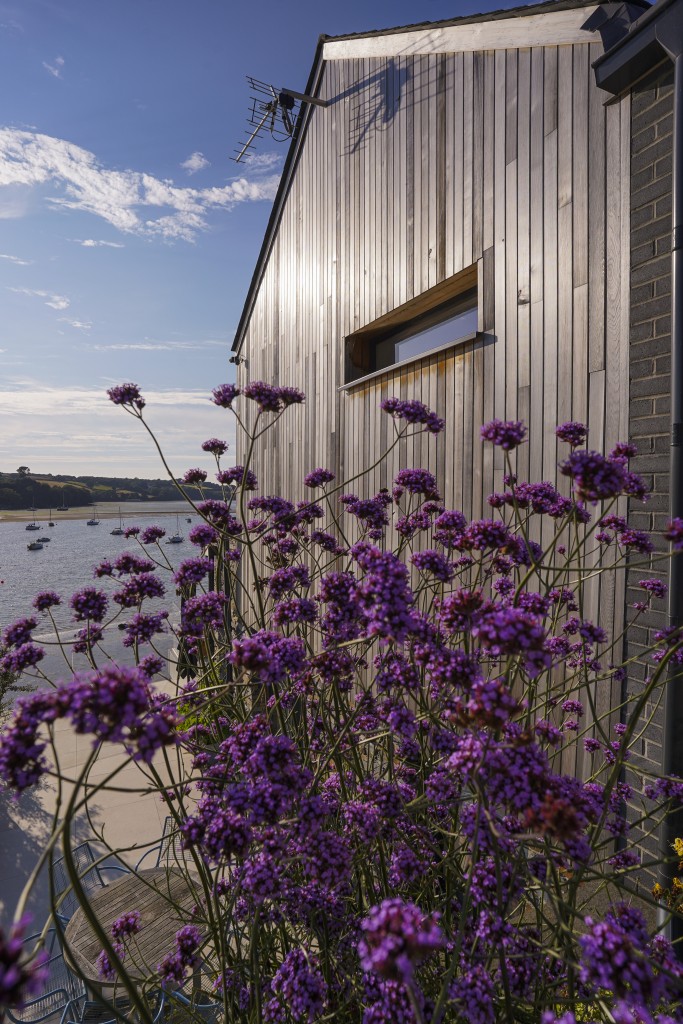
Building in a rural area
When you build in a rural area, you will probably also have the opportunity to design for the views around your property. Consider how the house is situated in the landscape, and where the sun will rise and set throughout the year to make the most of late summer sun, winter sunrises and long-range views.
Another factor to consider is the sight-lines of other properties, and neighbours – in the broadest sense. If your home presents an unattractive rear view that intrudes on a gorgeous vista, that may not be accepted through planning permission, for example. Buildings designed ‘in keeping’ with the rural landscape are more likely to be passed through Planning, than something that doesn’t ‘belong’.
There are other items scattered around the countryside that may have an impact on your design choices – protected trees, listed structures and scheduled monuments, to name just three. There is more about these in our Knowledge Hub article that looks at National Landscapes and things and we are planning a longer article about the mechanics of planning permissions in rural areas, [link], but it’s worth being aware of what is protected, in the landscape you’re considering.
The final thing to bear in mind is access. Narrow roads, overhanging trees, roads that are the only point of access to other dwellings beyond your property – these are all issues that we contend with regularly, on rural sites in Cornwall. We’ve got the skills to handle them, but you should be aware that they may arise in connection with the plans you’re hatching.
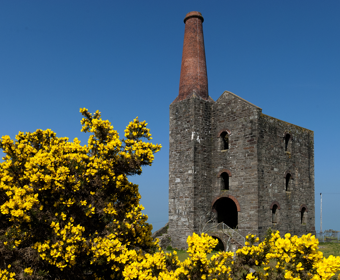
Making it work
The key to ending up with a rural or coastal home that works for you and your circumstances is to listen. To the weather forecasts, to the experts in design, planning permission and construction, to the neighbours, and to the landscape itself, as woo-woo as that sounds. Our Design Team will want to spend time on your plot, to get a feel for it, and it will really help you to do so as well – at different times of day, at different points in the year, and in different weather, as well as during ‘business hours’.
We’d love to work with you to help you achieve your dream home, that is also perfectly suited to the plot that you have, and will stand the test of time there. Have a look at some examples of our previous projects [Creek view and Seaside Home] and drop us a line!
